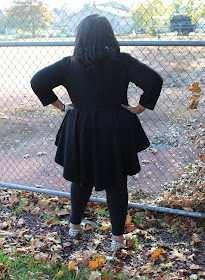One of the byproducts of gaining some weight back is that my original TNT pants pattern now fits. Not the altered one that I was using when I started to lose weight (and was at my heaviest) but one of the in-between stage pants patterns - yes, that's how many times I've altered that pattern!
Anyway, when I made the Rivermont Top, I cut a pair of my TNT pants from the black ponte too. My goal was to wear the two pieces together but I ran out of time for the blog post for the Curvy Sewing Collective. However, a black pair of pants is always a good thing, so I finished them this weekend.
Materials ~
black ponte from Metro Textiles
Dritz pull elastic (I found some at SIL Threads)
black rayon seam tape
I have no new construction techniques info to add because I've made these pants too many times to count!
So here are some pictures of the pants in action worn with some of my recent makes ~
With my Vogue 8772 bow-tie blouse
With my Rivermont Top
and with a yet to be blogged top ~
Conclusion ~
I'm glad I added this pair of pants to my closet. When I need to be just a little dresser, these will work. Also I'm so happy to have my TNT pants pattern back!
The girls were here this afternoon with their Mother while she took these pics...so here is a picture of me with Miss Aleena and Miss Samantha!
...as always more later!




















































